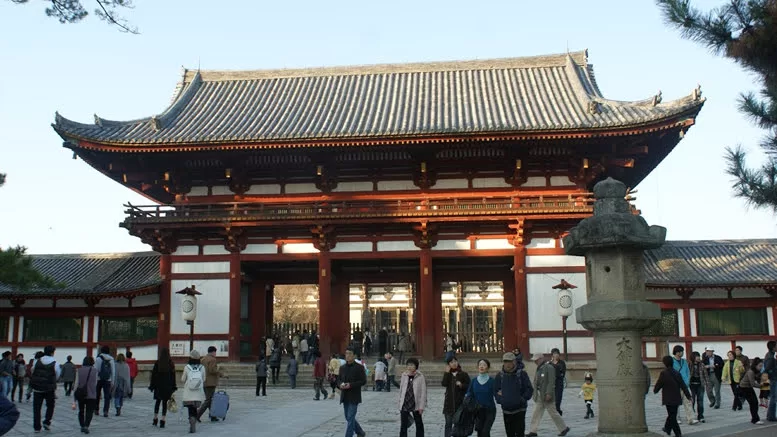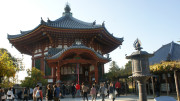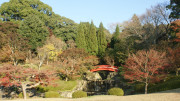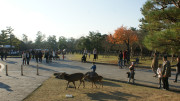Nara was Japan’s capital from 710 to 784. Today, it serves as the capital of Nara Prefecture and is one of Japan’s most culturally significant cities, with many of its temples and shrines designated as UNESCO World Heritage Sites.

During Nara’s time as the capital, Buddhism grew in influence, shaping the spiritual and cultural life of Japan. Many of the country’s largest and most important temples were built in Nara, and today, these historic structures remain some of the city’s most popular attractions.
Nara Park and Its Temples
Many of Nara’s cultural landmarks are concentrated around Nara Park, home to some of Japan’s most famous religious sites.
- Todaiji Temple – This temple houses the world’s largest Buddha statue (Daibutsu) inside what was once the largest wooden building in the world.
- Kofukuji Temple – Known for its collection of National Treasures, including ancient Buddhist statues and artefacts.
- Kasuga Grand Shrine – A Shinto shrine famous for its picturesque pathways lined with over 1,000 stone lanterns.
Nara’s Famous Deer
One of Nara’s most famous attractions is the tame deer that roam freely around Nara Park. These deer, considered sacred messengers of the gods in Shinto belief, are accustomed to human interaction and will often approach visitors—especially those carrying food. A popular activity is feeding the deer with shika senbei (deer crackers), which can be purchased from vendors in the park.
While generally friendly, the deer can sometimes become a bit pushy, particularly when they are hungry. To prevent injuries, their antlers are trimmed annually.
Getting to Nara
Nara is conveniently located about 35 minutes east of Osaka by train, making it an ideal day-trip destination. Nara Park is within walking distance from both Kintetsu Nara Station and JR Nara Station, and the best way to explore the area is by leisurely strolling through the park and its historic sites.




